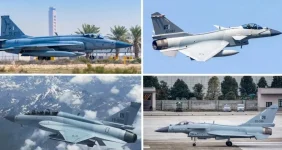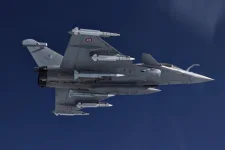- Views: 2K
- Replies: 3
In a devastating blow to Pakistan's military capabilities, the loss of two advanced surveillance aircraft during India's "Operation Sindoor" in May 2025 has emerged as the most significant financial and strategic setback for the Pakistan Air Force (PAF).
The destruction of the two Saab 2000 Erieye Airborne Early Warning and Control (AEW&C) systems, valued at a combined $340 million, represents a far greater impact than the loss of numerous fighter jets during the 88-hour conflict.
The operation was initiated on May 7, 2025, as a response to a terrorist attack in Pahalgam, Jammu and Kashmir, which resulted in 26 civilian casualties.
In retaliation, the Indian Air Force (IAF) conducted widespread precision strikes against 11 PAF airbases and nine terrorist training camps
Utilising a formidable arsenal including BrahMos supersonic cruise missiles, SCALP-EG long-range missiles, and the S-400 Triumf air defence system, the IAF targeted high-value military assets across Pakistan and Pakistan-occupied Jammu and Kashmir (PoJK).
The Crippling Loss of a Strategic Asset
The most critical damage inflicted upon the PAF was the confirmed destruction of two Saab 2000 Erieye AEW&C aircraft.One of these vital assets was reportedly shot down by an Indian S-400 missile from a distance of 314 kilometres, while the second was destroyed by a BrahMos missile strike while it was on the ground at Bholari airbase.
These aircraft, often called the "eyes in the sky," function as flying command and control centres.
The Erieye system, featuring a sophisticated Active Electronically Scanned Array (AESA) radar, provides 270-degree surveillance and can detect and track enemy aircraft, missiles, and drones up to 450 kilometres away.
This capability is crucial for coordinating a nation's air defence and directing its own fighter jets during combat.
With a 2025 replacement cost of approximately $170 million per aircraft, the total financial loss from these two platforms alone stands at $340 million.
More critically, the loss constitutes a 22% reduction in Pakistan's entire AEW&C fleet, which numbered nine before the conflict.
This severely degrades the PAF's ability to maintain situational awareness over its airspace.
The human cost was also significant, with reports indicating five specialist personnel were killed in the strikes, representing an irreplaceable loss of expertise.
Fighter Jet Losses: Numerous but Less Damaging
While the PAF also suffered the loss of several fighter jets, their financial and strategic impact was comparatively lower.The downed aircraft included a mix of modern and aging platforms from the PAF's inventory.
- F-16 Fighting Falcons: Between two and eight F-16s were reportedly lost. The more modern Block 52D variants are valued at over $87 million each, while older F-16A/B models, acquired in the 1980s, have a much lower replacement value.
- JF-17 Thunder: Developed jointly with China as a cost-effective multirole fighter, one to four JF-17s were reported lost. Each unit costs between $25 million and $30 million.
- Mirage-III: Several of these older French-made fighters, which have been in service since the 1970s, were also destroyed. Due to their age, their financial value is minimal, estimated at $5 to $10 million per unit.
Pakistan operates over 70 F-16s and more than 150 JF-17s, providing a degree of operational redundancy that does not exist for its small, specialised AEW&C fleet.
The precision strikes during Operation Sindoor highlighted the effectiveness of India's long-range weapon systems and exposed vulnerabilities in Pakistan's air defence network.
The successful engagement of an AEW&C aircraft by an S-400 missile at over 300 km is a landmark event in aerial warfare.
Other major losses for Pakistan, including a C-130J transport aircraft ($40 million) and an HQ-9 air defence system ($200 million), contributed to an overall estimated financial toll of $3.36 billion from the brief but intense conflict.



